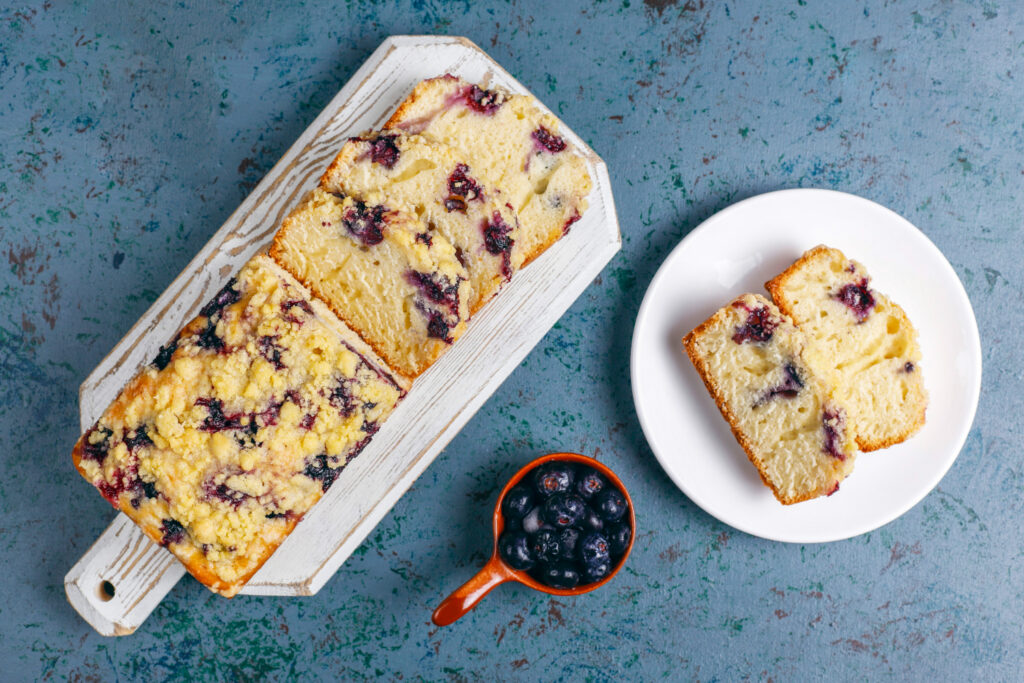I’ll be honest—the first time I made Mary Berry’s Madeira Cake, I expected something light and refined. Instead, I ended up with a slightly domed sponge that had a crack across the top, almost like it had split its trousers. I was a little disappointed.
But here’s the twist—the crack is exactly what you want! Madeira cake is meant to rise with a gentle dome and a proud crack on top. That’s the mark of a perfectly baked cake. Who knew?
This recipe won me over completely on the second attempt. It’s firm yet tender, not too sweet, and the addition of lemon zest gives it just the right amount of freshness. I’ll walk you through the tweaks I made, how I got the crumb just right, and why almond flour is the unsung hero in this recipe.
Why This Recipe Works
The secret to this cake is the almond flour. Most Madeira cakes can turn out a bit dry and bland, but the ground almonds keep this cake wonderfully moist.
Instead of the usual method of creaming butter and sugar, Mary’s approach is to simply toss everything into a bowl and mix it all at once. I was skeptical at first, but this method works beautifully—provided your butter is truly room temperature (no cold butter cheating here!).
The final trick is letting the cake rest in the tin for a few minutes before turning it out. This helps it firm up enough to keep its shape and prevents it from collapsing.
Ingredients + Why They Matter
-
Self-Raising Flour (225g): This gives the cake its signature rise. I’ve tried plain flour with baking powder, but it’s just not the same.
-
Butter (170g, softened): It needs to be soft, or your batter will have lumps. I always leave mine out overnight to soften.
-
Superfine Sugar (175g): This dissolves more quickly and gives the cake a smoother texture. Granulated sugar doesn’t work as well.
-
Lemon Zest (from 1 lemon): Adds brightness to the cake—don’t skip this step.
-
Almond Flour (50g): Keeps the cake moist and rich. I’ve tried making it without, and I wouldn’t recommend it.
-
Eggs (4 large): Room temperature eggs help keep the batter smooth and prevent curdling.
-
Candied Citron Peel (optional): A traditional touch, but I often skip it. It does add a nice look if you use it!
Ingredient Substitutes That Work
-
No Self-Raising Flour?: Use 225g plain flour + 2 tsp baking powder + a pinch of salt. This works just fine.
-
No Almond Flour?: I’ve used ground hazelnuts before, and it gave the cake a nutty flavor, but it changes the whole character of the cake. Only use this if you want a different twist.
-
Gluten-Free?: I tested it with Doves Farm GF Self-Raising flour. It’s a bit crumblier in texture, but still works well.
-
Egg-Free?: I haven’t cracked the egg-free version yet. Every attempt I’ve made turned out dense and disappointing. Still experimenting!
Mistakes I’ve Made (And How to Avoid Them)
| What Went Wrong | Why It Happens | How to Fix It |
|---|---|---|
| Dense, stodgy crumb | Cold butter or under-mixed batter | Use soft butter and beat the mixture thoroughly |
| Greasy base | Tin not lined properly | Line with baking paper, not just greased |
| Over-browned top | Oven too hot or rack too high | Bake on the middle shelf, not the top shelf |
How to Make Mary Berry’s Madeira Cake
-
Prep the tin: Grease a deep 7-inch tin and line the base with baking paper.
-
Preheat the oven: Set to 175°C (350°F) regular or 160°C (320°F) fan.
-
Mix everything: Add all the ingredients to a bowl. Beat with an electric mixer for about a minute until the mixture is smooth and creamy.
-
Into the tin: Spoon the batter into the tin and level the top.
-
Bake: Bake for 55–60 minutes. If using candied peel, add it halfway through. Test with a skewer—it should come out clean.
-
Cool down: Leave the cake in the tin for 15 minutes, then turn it out onto a wire rack to cool completely








